History of Tangier and etymology of the name:
Tangier is a major city in Morocco in the north of the country. Far from being the largest (950,000 people), but the second largest in industrial development (after Casablanca), and also earns a lot from tourists. And it developed like this…
In the 2nd millennium BC on the place of Tangier was the Phoenician settlement, from which we can conclude that the place here is advantageous: a stone’s throw away – the Strait of Gibraltar, as it were. However, there are two small cemeteries left by the Phoenicians – it is possible that the city died out on its own. And then, as is often the case with Moroccan cities, Tangier began to conquer.
Foundation of Tangier:
Tangier was founded in the fifth century BC by Carthage. And then it began … First the city was conquered by the Roman Empire. After Rome, the city was waffled by the Vandals, Byzantines and Arabs (in VIII century AD).
The Arab period of the city was overshadowed by the Portuguese conquest in 1471, after which the city became more or less European, but the hands did not stop. In 1580 Tangier went to Spain (they say, purely nominally, but she, I think, was pleased all the same). After Spain, Portugal took Tangier back, and in 1661 Britain snatched a tidbit for itself as a dowry of the Portuguese Infanta who married King Charles II of England.
Do you think Britain rejoiced long? No, already in 1684 Morocco took Tangier for good and has owned it ever since. The British, however, providentially collapsed both the city and the port, and the importance of the super-duper port in the Gibraltar project was lost. It would have been a village here, but then the Tangier Crisis happened.
In 1905, France, successfully gathering land under its wing in Africa, decided to get its hands on Morocco. And it seems that no one was against it (Morocco does not count, of course). But suddenly the German Kaiser arrived in Tangier and offered the Moroccan sultan (his hand and heart) a defensive alliance. For some reason, everyone panicked and called a conference, where Germany realized that no one liked it and that it would not be allowed to conclude an alliance. France, by the way, also lost out on Morocco, not giving up its attempt to get the territory in the future (see the Agadir crisis).
Tangier between 1912 and 1956 and its name foundation:
In Morocco Tangier lasted until 1912, when it was ceded to Spain. And in 1923, an international zone was created out of Tangier with the surrounding area. The city returned to Morocco as late as 1956.
In the twentieth century, Tangier became famous for two things. Firstly, its spy activities during World War II. The international zone left its mark – as a result, if you see a movie about spies in World War II, and something Moroccan appears on the screen, you’re likely to see Tangier. Secondly, many cultural figures of the early and mid-twentieth century – Delacroix, Matisse, George Orwell, Tennessee Williams, William Burroughs, Allen Ginsberg, Jack Kerouac and even the Rolling Stones – rested and stayed here.
The origin of the name “Tangier” has a bunch of versions. The most popular one is that it was named after Tingis, the daughter of Atlas, the same man after whom the mountains in Morocco are named. A more truthful version is an adaptation of the Semitic word for “port,” “tigisis. The ancient Greeks, however, thought it was all bullshit, and the city was named in honor of Tinga, the widow of Antaeus, who was strangled by Hercules. After the successful strangling, Hercules spent the night here, in the caves of Hercules, not far from the city. The caves, by the way, are famous as one of the most interesting sites near Tangier. Not because of Hercules: it is simply beautiful, if you have time, go there.
In general, Tangier is popular with tourists thanks to a mixture of North Africa, Spain, Portugal and France. Plus the location is convenient: it’s just a short drive from Europe. The city is so touristy that it even accepts women without hats – and women traveling alone. And for the local area, that’s a gigantic achievement.
How to get there:
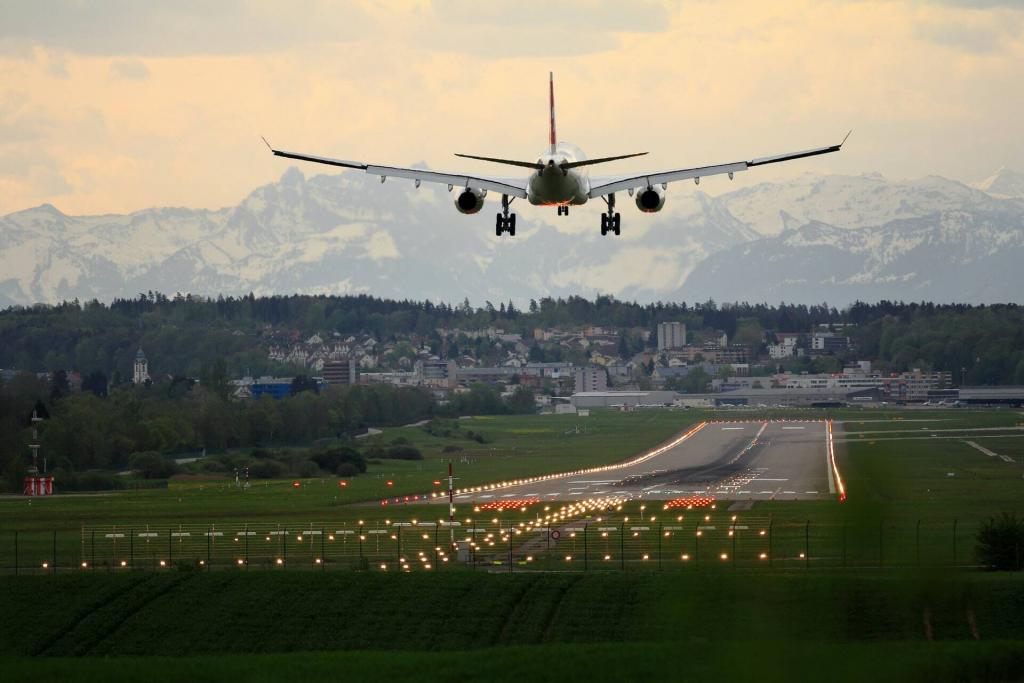
Tangier can be reached by all possible ways – by water, by land, and by air. The local airport takes regular flights from anywhere in the world, unless you have to make a connection in Spain. From the south of Morocco and neighboring countries is easy to reach by train or bus, and from Spain, France or Italy, on foot or by car – by sea ferry. By and large, Tangier is Morocco’s northern gateway for travelers from Europe to Africa.
By plane:
The most adequate and pragmatic way is to fly by plane to the local Ibn Battuta airport.
Once you have chosen a date, be sure to check prices from all sources. Sometimes a ticket is cheaper on Expedia, and sometimes on the airline’s website, as part of a seasonal promotion, you can buy a half-business class ticket for the price of economy class, which is no different from regular business class. This has happened to me twice, and I couldn’t be happier. You can also look up tickets to Tangier here.
The airport is just outside the city, more than 15 km to the center. Unfortunately, I couldn’t find any other sane transportation besides cabs. So if you can, you have to take care of the transfer.
Basically there is a stop of the bus 9 at the junction with the main road to Tangier, but it’s a long walk, and then you have to wait and wonder if it’s coming and whether there will be a seat. In my opinion, it’s not worth it.
Greedy cab drivers, who put a chain of their elderly Mercedes, take advantage of this unpleasant circumstance and offer for 25 euros to get you to the medina (Downtown Tangiers). But we are in Morocco, we must immediately shoot down. For 12-15 euros with persistence it is possible to agree.
The most budget way is to find a low-cost airline to Casablanca (from 200 euros) and get to Tangier by train. The cost of such a transfer will be even cheaper than a cab from Ibn Battuta, but five hours in a seated carriage after a 10-15 hour flight is a special experience.
By train:
If you are already in Morocco, there are trains to Tangier from many cities, the cost and travel time can be calculated on the website of the ONCF (Office National des Chemins de Fer du Maroc), the national rail operator of Morocco. For example, the trip from the Moroccan capital Rabat (Rabat Ville Central Station – Tanger Ville) will take about four hours and costs 95 dirhams ($9.5).
The trains have two classes – first class with the specified seats, and half the price of the second class. Seats are seated, compartments for six passengers or open space. There are trains with double-decker cars. The level of comfort – a lottery, it is difficult to guess which train will get. If you’re lucky, you will have a pleasant ride in a half-empty air-conditioned car, or you may end up in a cabin full of people with bags and children.
On long-haul routes, light snacks and drinks are distributed in the cars. Occasionally, illegal vendors drop by at train stops; you’d better not buy anything from them.
ONCF staff are in uniform, many speak English and you can always ask for help.
Train schedules do not guarantee anything. In Morocco, you should not demand punctuality from anyone. We have the clock, they have the time. The train can easily be an hour late, or even earlier.
Tangier has two train stations – the central Tanger Ville and Tanger Morora, which serves the sleeping areas of the city. The main station is pretty clean, is in the heart of the city, that to decent hotels, that to a residential downtown, even to the beach – you can walk.
The buffet at the station is modest, but very close, in two or three minutes walk in the direction of the embankment, there is a “McDonald’s”, and in the shopping center right in front – a full-fledged food court.
By bus:
From the major cities of Morocco to Tangier you can take an intercity bus, it can be even cheaper, but also more tedious if you are unlucky with the bus. It’s quite a long way from the main cities and if you decide to save money and take a piece of junk, the road will be hell. There are a lot of carriers, prices and conditions vary a lot.
The bus station is also in the center, near the Mosquée Souria. You can walk to the Cultural Center or take Petit Taxi for 5 Dirhams ($0.50 USD).
By ferry and car:
The most romantic way to Tangier is to cross the Strait of Gibraltar by ferry. This is in case you decide to come to Morocco from Europe on your own or by car.
Ferries go here from Spain, France and Italy. Prices depend on the company and distance. The most inexpensive is from nearby Spain. The fare is from 35 euros one way (cheaper there and back), the trip takes an hour.
This way is also suitable for auto-tourists, the cost of a comprehensive ticket for travelers with a car from Tarifa is 162.5 euros.
When is the best time to go?
In winter, Tangier is cooler than the north. Therefore, the best time to visit is from April to October. It is already possible to swim on the city or country beaches, and the city is better prepared for the visit of visitors.
It should be noted that all the work on the improvement are carried out in the off-season, so in the winter months and move around the city is not very comfortable. All around are repairs, the houses are in scaffolding, and it’s noisy.
In the summer of Ramadan (month of obligatory fasting for Muslims) may be a bit unusual – most stores and café-restaurants are closed, but some still function. But it is nice and quiet, no one is in the streets, you can have a walk in good health.
Another option is to book a travel agency, check out some tours below:
Top things to see and do in Tangier:
As I said before, Tangier will appeal primarily to those who prefer urban tourism. The sights are a dime a dozen, but there are plenty of places to walk around. Without regard to the map or GPS-navigator (it’s cheating anyway – Google maps in Morocco is a bad adviser, very badly processed terrain, and all the time confusion because of the different interpretation of toponyms in different languages), go ahead. If a place seems interesting, go for it.
Old Medina:
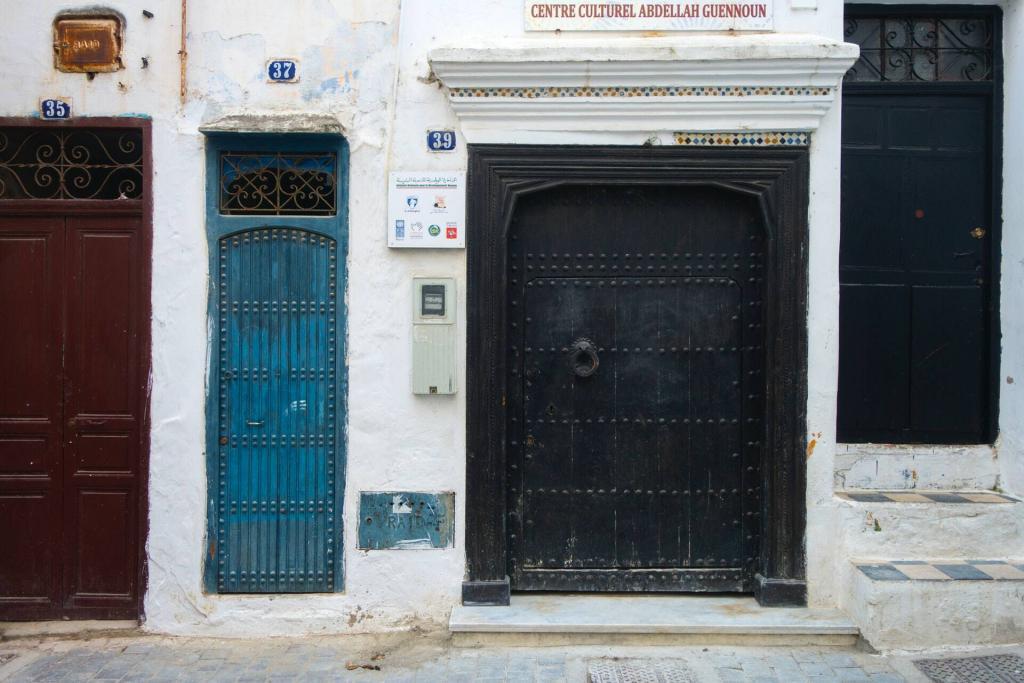
To begin with, you should definitely explore the Old Medina. If you have already been to other Moroccan cities, it is unlikely to impress much, but it is worth wandering through the labyrinths. And, of course, to get out to the fortress.
Recognizing a foreigner, the homegrown guides will immediately begin to offer you an escort in poor English. They will not tell you anything interesting, and will try to charge you more money. It’s easier not to engage in any discussions at all. Fortunately, you cannot get lost in Tangier medina and you won’t need any help from others.
In Medina you can stumble upon the tomb of the great 14th century traveler Ibn Battouta (Tombeau d’Ibn Battouta), who was born in Tangier and traveled the entire Arab world. Recognizing the mausoleum is not easy, it looks like an awkward bulge on an old house, and only a modest plaque lets you know what the landmark is.
Marketplace:
The small streets of Medina smoothly turn into the town market (Grand Souk), which opens onto the Grand Socco, marked on the maps as Place du 9 Avril 1947 (named after Mohammed V’s speech of independence in Morocco).
In the bazaar you can buy inexpensive and tasty fruit, good meat, sweets, nuts. Some shops have household goods, others have counterfeit goods, and others are filled with a lot of incomprehensible garbage. The peddlers simpler ones lay out their goods on a newspaper right on the pavement.
There are not many tourist shops, but each of them tries to contain everything that can be brought from Morocco – carpets, scarves, leather goods, souvenirs, trinkets. As a rule, the pavilions of such shops are located on several levels, floors, and crowning all this splendor restaurant on the top terrace, where you can admire the city roofs and eat expensive.
Museums:
Walking around the fortress, be sure to check out the Kasbah Museum (Musée de la Kasbah) with a beautiful sultan’s garden, not a bad place to meditate. Admission is 10 dirhams (1 dollar). Located on Place de la Kasbah, open 9 to 16 except Tuesdays.
Lovers of antiquities will enjoy the Musée des Arts Marocains et des Antiquités (Museum of Moroccan Art and Antiquities). It is next to the Kasbah Museum, in the same square, in the Sultan’s Palace of Dar el Makhzen. The palace itself is worth seeing as a fine example of Maghreb culture – with mosaics, Arabic patterns and all kinds of architectural delights. And in the halls, if you are lucky and the museum is open, you can admire ancient carpets, weapons, national costumes and everyday objects. Official opening hours are 8:30 a.m. to 6 p.m. Monday through Thursday, but there are no guarantees. Sometimes they close the museum without explanation.
Next to the Old Medina is the Old American Legation Museum at 8 Rue d’Amerique. It is a museum and cultural center. Here you will hear about the U.S. participation in the fate of Morocco, there are many old maps, prints and documents, and exhibited modern Moroccan art. As part of its cultural mission, the organization holds all kinds of seminars and conferences and gives out grants to talented Moroccans. Admission is 20 dirhams ($2) and a guided tour costs 50 dirhams ($5). The museum is open Monday through Friday from 10 to 17, Saturday until 15.
Tourist streets:
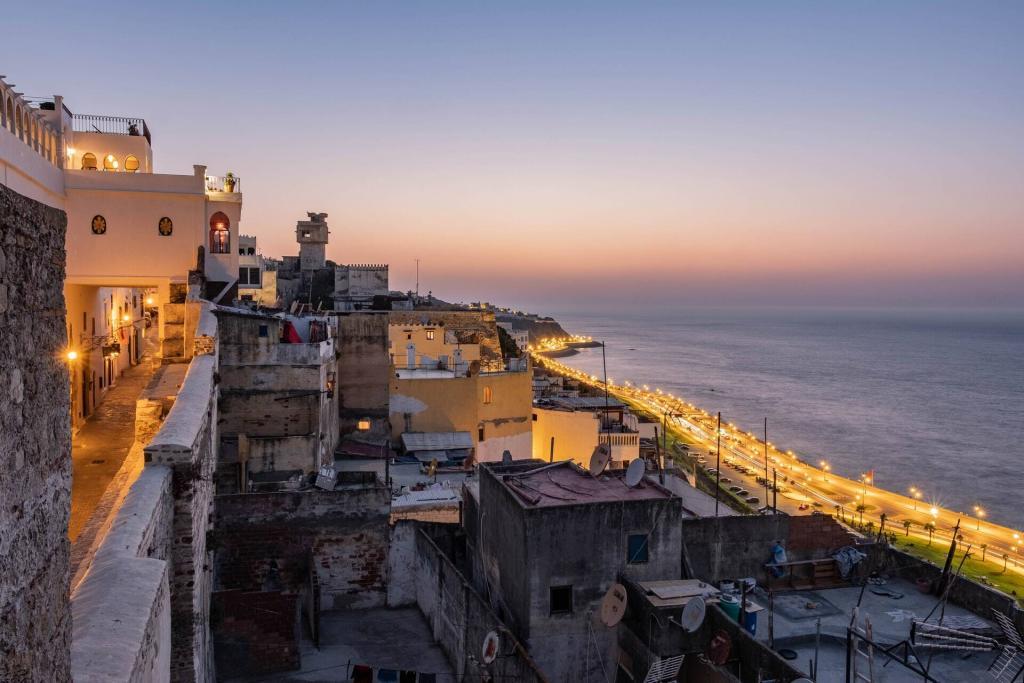
Tangier is good for walking. It’s best to start with the lively Avenue Mohammed V and go wherever the eye can see. There are shopping streets like Avenue México with lots of fun stores and fruit and sweets along the road. On every corner are cafes and restaurants for every taste and purse.
The hilly streets up from the train station take you to the Route de Tetouan. From the hill you can get a good view of the city and the strait, and it’s also worth admiring the old bullring (Plaza De Toros). Ten years it was built by the Spaniards, passionate bullfighters, in 1950 finally opened. But the arena has worked only a few years, the Moroccans who came to power forbade this bloody entertainment. Since then, this huge arena, already quite dilapidated, simply became one of the decorations of Tangier.
It’s nice to walk along the promenade along the waterfront on Avenue Mohammed VI. The new architect of the city is in the midst of a global renovation and has decided to replace all the dilapidated waterfront establishments with new, modern ones. Let’s see what comes of it.
Malabata is a great neighborhood to walk around. Lots of cute cafes, great views of the sea.
Beaches:
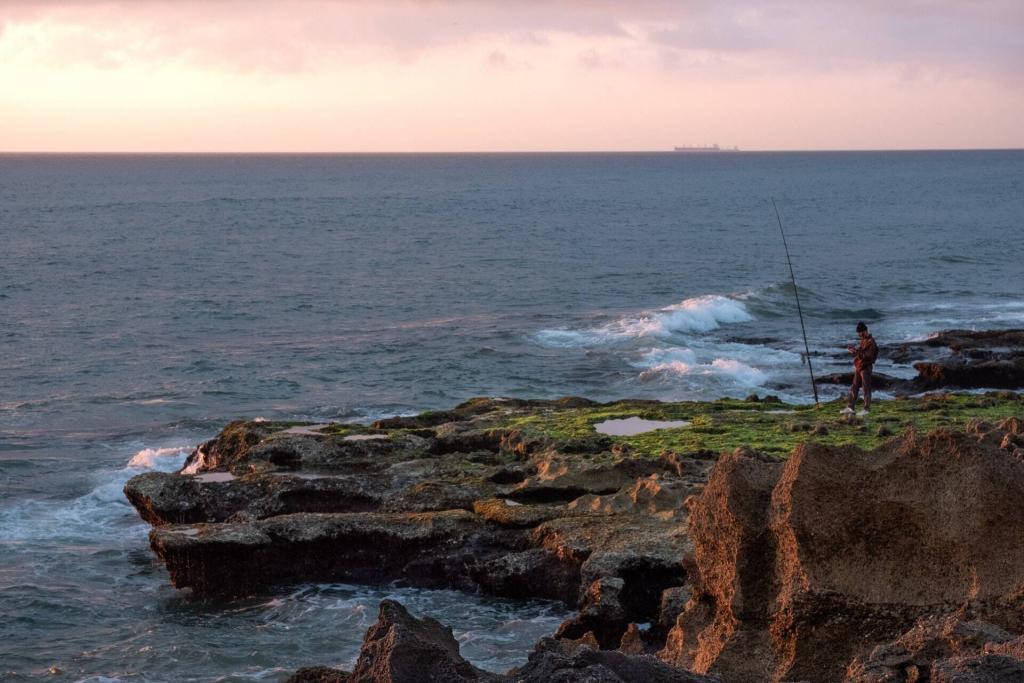
All beaches in Tangier, whether urban or suburban, are somewhat wild. There is no infrastructure, no changing cabins, no public toilets. Deal with it however you want. Sometimes as the separate service can bring a bench and an umbrella from nearby cafe, it is necessary to agree at once about the price and to order from them something.
But in the season the beach is full of private entrepreneurs – who bring food and drinks, who offer to ride a horse, pony or camel, who will try to sell something illegal.
The city beach stretches along the entire city center from the port to the hotel district in Malabat. Since it is located in the heart of Tangier, it is easily accessible on foot. In its vast area you can find your favorite spot. I, for example, like to go near La Veranda cafe, it’s good waves, quiet and peaceful, not so many idle Moroccans loitering.
The locals don’t like to swim; they’d rather take a short dip without taking off their baggy clothes and sit on the shore. Or walk back and forth, gawking at the sunbathing foreigners.
These stares are not particularly threatening, but it is better to get away from them, or they will drill a hole.
A little away from the center, west of the port, is the beach of Merkala. It can be for 10 dirhams (one dollar) on the Petit Taxi along the picturesque promenade. The beach is located in a gorge and is quite beautiful.
What to see in the surroundings:
First of all, you should definitely visit the Caves of Hercules (Grottes d’Hercule) – the main tourist attraction of Tangier. They are located near the Ashakar beach, therefore it is possible to combine educational tourism with recreation. The cheapest way to get there is in the same way as to Ashakar – by “green” taxi from the parking lot near the Iberia Garden for a dollar per passenger. The driver must be drop off at the grotto, a cave just before the beach.
By the way, in the direction of travel on the left you will see the territory of the summer palace of the King of Morocco , enclosed by a high fence with flags .
According to legend, in this cave between the tenth and eleventh exploits, the mythical hero Hercules, who is also Hercules among the ancient Greeks, rested. I slept and went to steal golden apples from the wonderful garden.
The cave is spacious, well lit and clean. Visitors take pictures with might and main and immediately submit their images to social networks. From the inner observation deck, you can enjoy the ocean view. If you look closely, the shape of the hole is a bit like the shape of the African continent.
Outside there are restaurants, tourist shops, a toilet. A steep ladder leads down to the water. The entrance to the cave is free.
Another place worth visiting is El Mnar. This is to the east of Tangier, there from Casabarata there is bus number 16 (you can take it at the train station) or a minibus. Small taxis are not taken there, and if the driver decides to make money, he will increase the incredible price. The bus costs 3.5 dirhams, the minibus – 4 (35 and 40 cents, respectively).

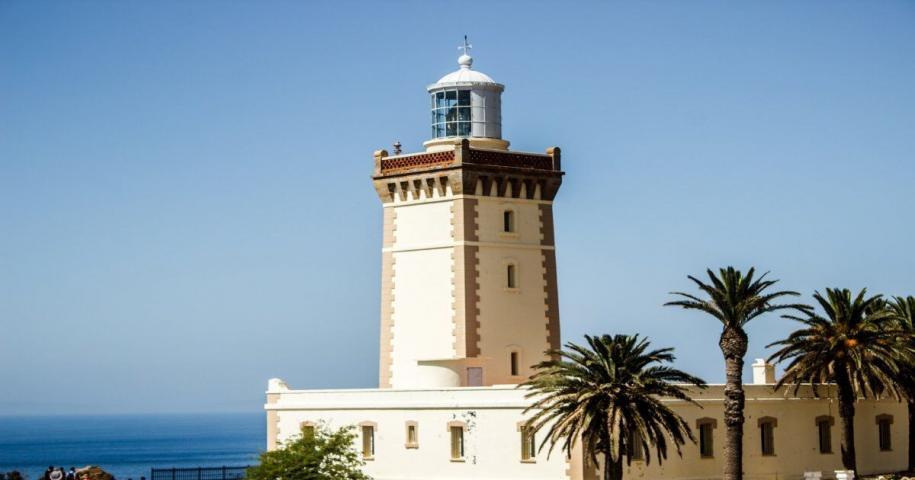
Leave a Reply